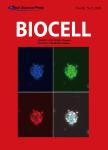DAPK2 promotes autophagy to accelerate the progression of ossification of the posterior longitudinal ligament through the mTORC1 complex
作者机构:Shanghai Changzheng Hosp Dept Spine Surg Shanghai 200003 Peoples R China Chinese Peoples Liberat Army Hosp 967 Dept Orthoped Dalian 116000 Peoples R China
出 版 物:《BIOCELL》 (生物细胞(英文))
年 卷 期:2024年第48卷第9期
页 面:1389-1400页
核心收录:
学科分类:0710[理学-生物学] 08[工学] 080401[工学-精密仪器及机械] 0804[工学-仪器科学与技术] 081102[工学-检测技术与自动化装置] 0811[工学-控制科学与工程]
基 金:Natural Science Foundation of Shanghai [20ZR1457600] School-Level Basic Medical Project of Naval Medical University [2021MS13]
主 题:Ossification fi cation of the posterior longitudinal ligament DAPK2 Autophagy mTORC1 IMPACT
摘 要:Background: Ossification of the posterior longitudinal ligament (OPLL) is a prevalent condition in orthopedics. While death-associated protein kinase 2 (DAPK2) is known to play roles in cellular apoptosis and autophagy, its specific contributions to the advancement of OPLL are not well understood. Methods: Ligament fibroblasts were harvested from patients diagnosed with OPLL. Techniques such as real-time reverse transcriptasepolymerase chain reaction (RT-qPCR) and Western blot analysis were employed to assess DAPK2 levels in both ligament tissues and cultured fibroblasts. The extent of osteogenic differentiation in these cells was evaluated using an alizarin red S (ARS) staining. Additionally, the expression of ossification markers and autophagy markers was quantified. The autophagic activity was further analyzed through LC3 immunofluorescence and transmission electron microscopy (TEM). An in vivo heterotopic bone formation assay was conducted in mice to assess the role of DAPK2 in ossification. Results: Elevated DAPK2 expression was confirmed in both OPLL patient tissues and derived fibroblasts, in contrast to non-OPLL controls. Silencing of DAPK2 significantly curtailed osteogenic differentiation and autophagy in these fibroblasts, evidenced by decreased levels of LC3, and Beclin1, and reduced autophagosome formation. Additionally, DAPK2 was found to inhibit the mechanistic target of the rapamycin complex 1 (mTORC1) complex s activity. In vivo studies demonstrated that DAPK2 facilitates ossification, and this effect could be counteracted by the mTORC1 inhibitor rapamycin. Conclusion: DAPK2 enhances autophagy and osteogenic processes in OPLL through modulation of the mTORC1 pathway.



